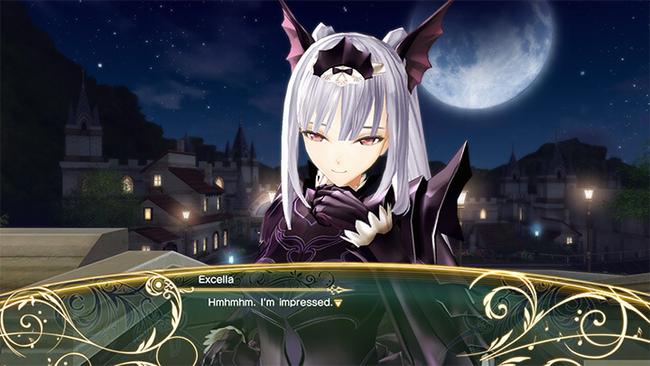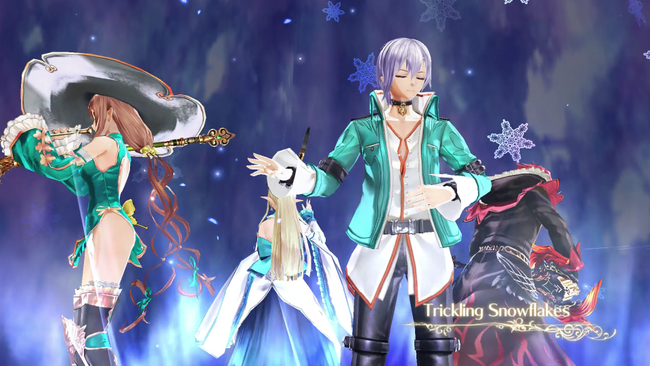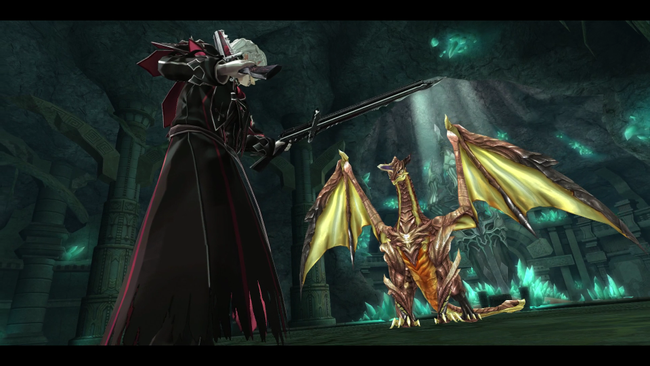
Shining Resonance Refrain Review
Shining Resonance Refrain tells the tale of a boy who carries the soul of a legendary dragon deep inside of him. Because of this burden he carries, he faces a myriad of struggles in order to defy fate while fighting alongside his Dragoneer companions he meets during his adventure. So let's get right into it: why exactly is this called Shining Resonance Refrain, aside from the fact this is a remaster of the PS3 release? Right from the beginning, you are given the option to choose between the self-explanatory Original mode, while the Refrain mode gives you access to two extra characters not found in the original version of the game, along with all the extras and DLC.
So, which mode should you choose? Despite not having played the original, I decided to go ahead and choose Refrain mode. This is because those two new characters can now join your party, but the game's storyline doesn't actually acknowledge the fact they're with you after the onset. Think of it like you were playing Final Fantasy VII and you used a Gameshark to get Sephiroth to join your party permanently. They're there, but no one wants to talk about it. Furthermore, the only way you can get the Platinum trophy in this game is by beating the Refrain mode, so there's yet another incentive.

You may have heard recommendations that you should play the Original mode because you may get lost otherwise. That is not quite true. The thing is, these two new characters were available in the original Japanese PlayStation 3 version as paid DLC. However, they do not share the same character development or scenes as the others do. At the end of the day, it's the same with two characters with no impact on the story.
I should also explain how awkward it is when they actually end up joining your party. Anyone who has played the Hyperdimension Neptunia series may be familiar with this, but when you purchase a DLC character, they just sort of show up, say a few lines, and they're in. That's what happens here as well. One of these characters is already revealed as an antagonist of the story, yet they just wander up, talk to Yuma for a bit, then join you.
As far as the recommendation to play the Original story mode, that is because that same conversation references events that happen much later. You're basically getting later story spoilers in one of the early chapters. In fact, I even fought those same characters in the main story while they were at my party. You can elect not to speak to them until later, but the publisher guidance is there for that reason. Basically, those expecting the Refrain mode to be substantially different than Original mode would be sorely mistaken.
But enough about that. What about the story itself? It tells the tale of a land that existed long ago in the past called Alfheim. The high elves of this island lived together with dragons in harmony. Like with every story, this peace didn't last. Deus, an incredibly powerful force, looked upon this island with disdain and sought to build a new world on top. High elves battled with their kin who stood beside Deus.
Chaos, suffering, and war spread forth as a shadow blanketing the land. Soon, however, Deus was defeated. But due to the consequences of war, the elves left what had become a barren wasteland and escaped to the mainland. Humans soon arrived and occupied this land, founding the kingdom of Astoria which dominated Alfheim. A new threat emerged, sadly, as the massive Lombardian Empire invaded the island. Fortunately, the elves return to protect Astoria from another war.
This is all thanks to the power of the Armonics, magical instruments given to them by a dragon of old that channel special magic and powerful feats far beyond the realm of normal people. The dragon who had forged Armonics from his body and granted blessings unto the mortals was the almighty Shining Dragon, the same dragon that embodies the soul of Yuma. It is here where the story begins.
.png)
Combat in the game is fairly standard, but that's not necessarily a bad thing. If you have played a Tales game in the past, you're already familiar with the way this operates. You have your standard attack, a break attack (as in break the enemy's guard), and a variety of skills and abilities at your disposal. By continuously hitting an enemy with Break Attacks, Force Attacks, or their elemental weakness, this can cause them to become immobile. This lowers their defense thus increasing the amount of damage they can take.
Each character has their own unique aptitudes as well. For example, Sonia fights with a sword and shield, utilizing her quick attacks and high defense against the opponent. Meanwhile, Kirika uses a Koto-no-Kagura, or a type of holy bow that lets her perform ranged attacks while supporting the party from the back line.
Every action causes AP or Action Points to be consumed. If you don't have enough AP, you won't be able to perform that particular ability. It is displayed by a bar that wraps around the character themselves rather than some meter at the corner of the screen, which is helpful and adds a nice dose of strategy to what is otherwise a rather straightforward battle system.
Perhaps the most enjoyable aspect of Shining Resonance Refrain's combat system is the ability for Yuma to transform into the Shining Dragon. Unlike other attacks, any actions performed by the dragon do not consume any AP. Instead, he uses MP that will gradually deplete over time. Once the MP bar is low or is fully depleted, Shining Dragon may go berserk, attacking allies and foes indiscriminately. It's a nice balancing act where you can't rely too heavily on the dragon's overpowered nature.
Another unique feature is the B.A.N.D. system, which allows you to perform different songs that provide a variety of special buffs to your party. It can be anything from boosting your accuracy to 100% to increasing magical damage while the song is active in battle. In order to perform, you will need to fill a gauge on the left of the screen called the BPM, or Battle Performance Mana bar, that increases with each attack that connects against the enemy. The special buff you provide changes depending on who is the Center of the group, and each character has their own unique performance, like Agnum who likes to shred on his guitar Armonic.

Lastly, there's Resonance. At any time during combat, an ally will trigger this ability that will support the player in various ways. Outside of battle, Yuma is given an opportunity to interact with other party members in different ways with a dialog tree. This can have a direct impact on the affection he has towards his companions. In battle, this will play out by changing the way they will support you. The stronger the bond, the more likely they are to Resonate.
Factors such as the other person's personality and behaviors must be considered during these bonding moments. As you can imagine, this is where the romance features of the game come into play. By conversing with those particular people you are interested in, their interactions towards you will change.
One of the most opportune moments to build up these special bonds is through Night Events. During your journey out in the field, you may come across a bonfire. Not only does this allow you a chance to rest up and perform alchemy on your own, but you can also invite a female or male party member to spend a little time with you so you can get closer.
Aside from improving your companionship, this is also a way for the game to provide an extra layer of development to the characters. In my time with the game, I decided to focus on Sonia since I figured she was the more interesting character of the bunch, being a strong and charismatic princess who isn't afraid to fight on the front lines.

This leads us to the crux of my enjoyment of Shining Resonance Refrain, and that is the characters. Although Yuma comes across as a bit of a lame duck of a personality, the rest have their positive quirks that kept me enjoying myself. In a sense, this is a good summer vacation JRPG. You probably had the same experience I did where I would hurry home after the bell rang at the end of the spring semester and just feel the urge to sit in front of the TV (when I wasn't forced outside) pouring my all into a particular title.
Shining Resonance Refrain is releasing at a pretty good time where it doesn't really have a lot of other competition to deal with, especially for its type of game. It also appeased my favorite thing to do in this genre: grinding up to such a high level that I crush every enemy I came across; though, it also means enemy strength doesn't scale to your level. That may be a good or bad thing depending on the type of player you are, but once you reach the end credits, there is at least some challenging post-game content you can tackle including a challenge arena and time attack mode.
While Shining Resonance Refrain may not be mind-blowing, it still has its own charm that I could appreciate. It may be a far cry from the Shining Force games I fell in love with as a kid, but for what it's worth, there are not a lot of games of this type anymore. With every Western and Eastern RPG embracing the open world concept, it's kind of refreshing to have this traditional yet action-focused game to relax with. With Tony Taka's character designs leading the way, you may find the same level of enjoyment with Shining Resonance Refrain as I did.